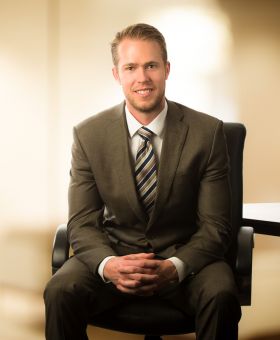 Logan Christenson
Logan Christenson See Bio
A patent claim that includes a numerical range may be rejected based on prior art that discloses the range. For example, prior art is considered to anticipate a range if it discloses (1) “a specific example … which is within [the] claimed range” or (2) “a range overlapping, approaching, or touching the claimed range” that “discloses the claimed range with sufficient specificity.”[1] Further, where claimed ranges overlap, lie inside, or are close to ranges disclosed by the prior art, a prima facie case of obviousness exists.[2] Often, when faced with these types of rejections, the claim may need to be amended to recite a range that is narrower than originally recited.
Of course, when making an amendment, the goal is to narrow the claim only to the extent necessary to avoid the prior art (e.g., to avoid encompassing any prior art examples and/or to avoid excessively overlapping prior art ranges), without giving up more in claim scope than is absolutely necessary. However, a claimed range must also be fully supported by the application’s disclosure.
Often, the patent specification will list a series of progressively narrow nested ranges. For example, a hypothetical patent specification may disclose a series of numerical ranges with a description along the lines of: “in one embodiment, the temperature is within a range of 500° to 800° C, or more preferably from 600° to 700° C.”
Using the same hypothetical patent application, assume that a Patent Examiner cites a prior art reference describing a specific example with a temperature range of 520° C. If the prosecution strategy is to amend the claim to a temperature range that avoids the cited reference, the patent applicant will clearly be unable to claim the broader range of 500° to 800° C. The applicant’s first inclination may be to amend the claim to recite the narrower 600° to 700° C range. Such an amendment would avoid the temperature described in the reference but may be more limiting than the applicant would ideally like to see. In some cases, it is possible to craft a better range that still avoids the prior art but is less limiting.
In the case of In re Wertheim,[3] the patent application’s specification described a range of 25% to 60%. The specification also included a specific example of 36%. The claimed range of “between 35% and 60%” was held by the Court to meet the written description requirement. In other words, based on the holding of In re Wertheim, a patent applicant is allowed to use
- as one endpoint of a claimed range: a specific example (or something close to it), and
- as the other endpoint of the claimed range: one of the endpoints of an expressly described range.
Using our hypothetical patent application from above, if the specification also includes a specific example of 550° C, the applicant could recite a range of 550° (a specific example) to 800° C (an endpoint of an expressly described range). The recited range of 550°to 800° C would avoid the prior art reference’s disclosure of 520°, would be fully supported by the specification according to In re Wertheim, and would be less narrowing than the initial option of 600° to 700° C.
Of course, the strategy supported by the In re Wertheim decision is only available if the specification actually includes particular examples in addition to the described ranges. Thus, whenever possible during drafting of a patent application, the specification should be made to include multiple numerical ranges and several specific examples located at different points within those ranges. Practitioners should also consider adding prophetic examples to round out the disclosed ranges and any actual examples.[4]
Several other considerations, such as whether the claimed range is obvious in light of the prior art, will also likely come into play when dealing with such range-based rejections. Nevertheless, the precedent established by In re Wertheim can often provide practitioners with greater flexibility in crafting numerical ranges that avoid prior art without overly narrowing claim scope.
[1] MPEP § 2131.03 (II).
[2] MPEP § 2144.05 (I); In re Peterson, 315 F.3d 1325, 1330, 65 USPQ2d 1379, 1382-83 (Fed. Cir. 2003).
[3] In re Wertheim, 541 F.2d 257, 191 USPQ 90 (CCPA 1976)
[4] Preferably, the specification will contain a number of actual examples. However, even prophetic examples may be corroborated or bolstered by data later submitted to the Patent Office via declaration under 37 C.F.R. § 1.132
Tags: Patent Law, Patents